We are proud to feature Marilyn, wife to our very own (and highly coveted trainer), Nick Brown. In today’s feature, Marilyn sheds some insight on training during her first pregnancy and ultimately, into her second and current pregnancy.
If you are pregnant or planning to become pregnant and are interested in exercising safely throughout your journey and beyond, we have you covered! Our team is unique – we are specifically certified as Pre and Post Natal trainers to help you navigate your journey safely and effectively. We have helped numerous women do just so and continue to help those in person and virtually. Learn more about our speciality services here.
👉 Without further ado, check out Marilyn’s journey as she continues to navigate fitness and pregnancy —

I hit rock bottom at 16 weeks pregnant with my first child. There I was, sitting on an exam table, EKG sensors stuck to my chest with tear stained cheeks, terrified. I’d wound up in the ER after days of trying to figure out why my heart wouldn’t stop racing and my head felt like it was going to explode. Hypertension was the eventual diagnosis. Baby and I were fine for now, but then and there I was branded “High Risk” for the duration of the pregnancy and given a laundry list of possible complications I had coming my way if I didn’t get my act together.
Frankly, I was in the worst shape of my life when I got pregnant, a mere five years after competing as a Division I athlete. I told myself it wasn’t that bad, and I got away with that delusion until I found myself on that table. I felt broken, scared and powerless, wondering what lay ahead. I grappled with the frustration of knowing that I had no one to blame but myself and the knowledge that I was the only one who could fix things. How could I trust me when I was the one who got me into this mess in the first place?
The way I saw it, the situation could play out in one of two ways. Either I give up and allow the diagnosis and inertia of the situation to control my outcome or I own my story and do everything in my power to protect my son and myself.

I’m happy to report that through consistent exercise and nutrition management, I was able to keep my weight and blood pressure under control, avoiding any further complications and delivering a healthy baby boy in September 2020. As I write this, I’m six months pregnant with my second child, 40 pounds lighter and enjoying a complication free pregnancy. I’m doing my best to use the principles I learned the first time around to guide me through round two. I’d like to share them in hopes that someone reading this might find them as useful as I did.
1. Find Your Why
Motivation waxes and wanes. Consistency over time requires a serious why. In my experience, this why has to go beyond superficial goals like pounds and inches. It has to speak to the core of who you are as a person and connect with how you define yourself. For me, it was my son. First and foremost, I wanted to ensure his health and mine. But beyond that, I wanted him to know that it’s never okay to give up on yourself. We don’t quit when things get hard. That pursuit extends beyond the period of my pregnancy. Through this experience, I developed the personal mantra:
Find your why and the how takes care of itself
2. Meet Your Body Where It Is
Starting a fitness journey at 16 weeks pregnant was daunting and less than ideal. Having a husband who is a pre-natal certified personal trainer helped me navigate the uncharted waters. However, being a former D1 athlete, I found it frustrating taking things so slowly. It took time for me to realize that my body was resilient, but it needed patience and a little grace to adjust to this new endeavor. You can’t get frustrated because you aren’t where you want to be at the beginning. Races don’t start at the finish line. You have to meet your body where it is and appreciate it for supporting you through your journey.
3. Be Patient. Progress is Non-Linear
In his book Atomic Habits, author James Clear discusses what he dubs the “Plateau of Latent Potential”. He is referring to the delay between taking action and seeing the results you expect. He uses the analogy of watching a cube of ice melt. It doesn’t seem like much is happening as you stare at it on the table, but it is melting. I highly recommend reading the entire book, but I found that particular idea very impactful. Progress is frustratingly non-linear. The reality is, you will never succeed if you keep quitting when your efforts don’t glean immediate success. Be. Patient.
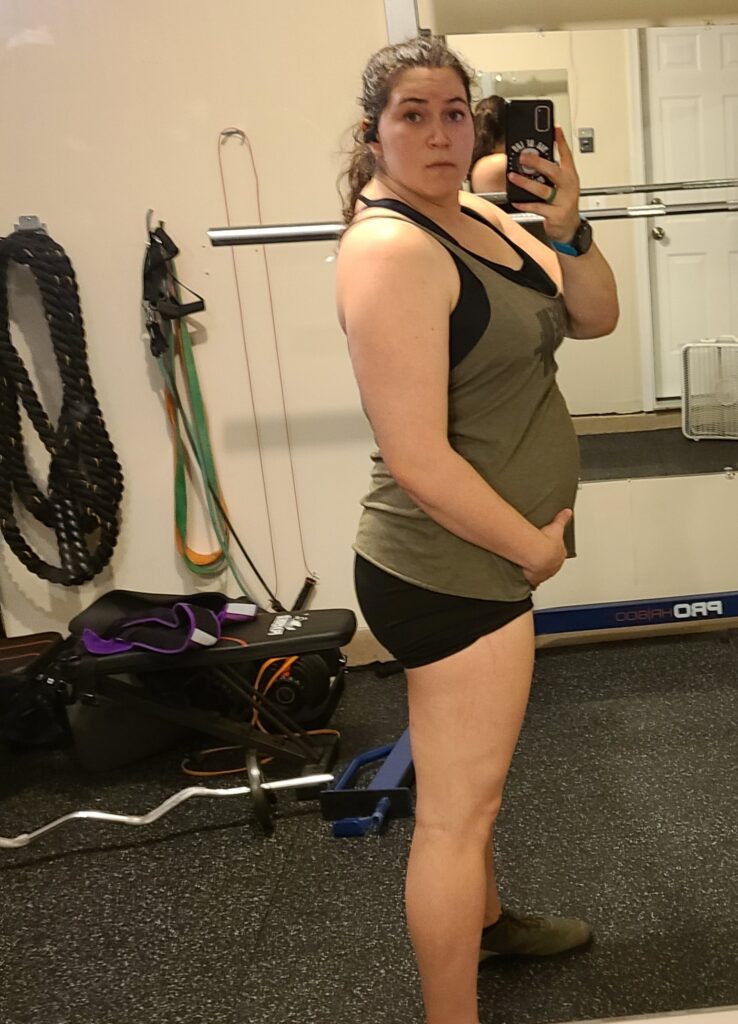
Final thoughts…
I share these ideas with the hope that they will benefit you in your personal journeys . I hope you feel empowered by the notion that no one gets to write your story but you. This does mean owning your outcomes, even the not so nice ones. You got yourself to where you are, like it or not, and it is within your power alone to get to where you want to be.
Written by Marilyn Brown
Training for Two: Fitness during Pregnancy and Beyond
Photos courtesy of Marilyn Brown.
About DeHenzel Training Systems: DeHenzel Training Systems offers In Home Personal Training services throughout Northern Virginia, Washington DC and select areas of Maryland. We also offer Virtual Personal Training – train anywhere, any time!
Within Northern Virginia, we service Arlington, Loudoun, Fairfax and Prince William Counties including: Alexandria, Annandale, Arlington, Ashburn, Burke, Centreville, Chantilly, Fairfax, Falls Church, Gainesville, Great Falls, Haymarket, Herndon, Lansdowne, Leesburg, Lorton, McLean, Oakton, Reston, Springfield, Sterling, Tyson’s Corner, Vienna and Woodbridge. Don’t see your city listed? Contact us today to find out if we service your area!
What is the Keto Diet and should I be doing it?
Somewhere during the last year with the birth of our youngest, we got lost in the day to day craziness of running a business and dropped the ball on our blog articles. Perhaps we were over-zealous with one new article a week. Or perhaps going from one kid to two kids was much crazier than we anticipated. Let’s go with somewhere in the middle of both.
Anyway…we are BACK!

While we won’t be aiming for a new article every week (that was a tad over-zealous), we do promise new content on a much more regular basis. We will also be revisiting our Q&A Tuesdays, where we take a popular health and fitness question and break it down for you.
Without further ado…this week we are tackling, “What is the Keto Diet and should I be doing it?” Unless you’ve been living under a rock, the keto diet has been the hot diet for the last few years and it seems that just about everyone is taking about it…Keto Guido anyone?
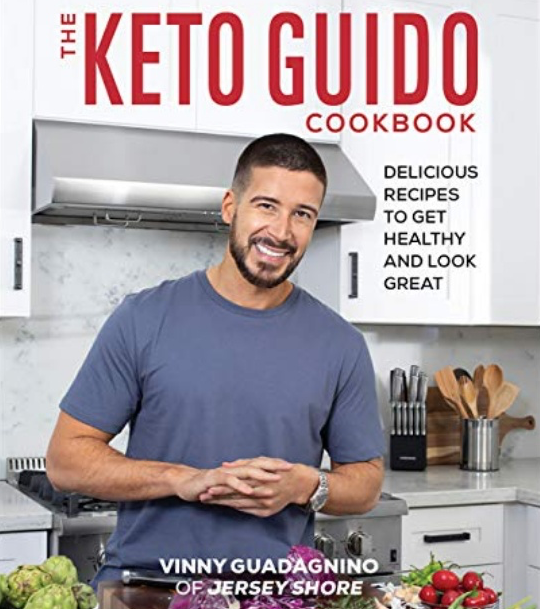
In this article, we will be breaking down the basics of what the keto diet is and how it works, along with the pros and cons on the diet. We’ll also address, if it’s for you. If that sounds of interest to you, continue on 🙂
What is the Keto Diet?
The keto (short for Ketogenic) diet is essentially a low-carb, high fat diet. Since carbs are limited on the keto diet, the body turns to fat for fuel and places the body in a state of ketosis, hence the term, “keto”.
In terms of macro breakdown, carbs are very, very low, clocking in around 5% of your daily needs or 30-50 grams per day. Fat is high, 75% of your daily needs and protein is adequate, around 20% of your daily needs.
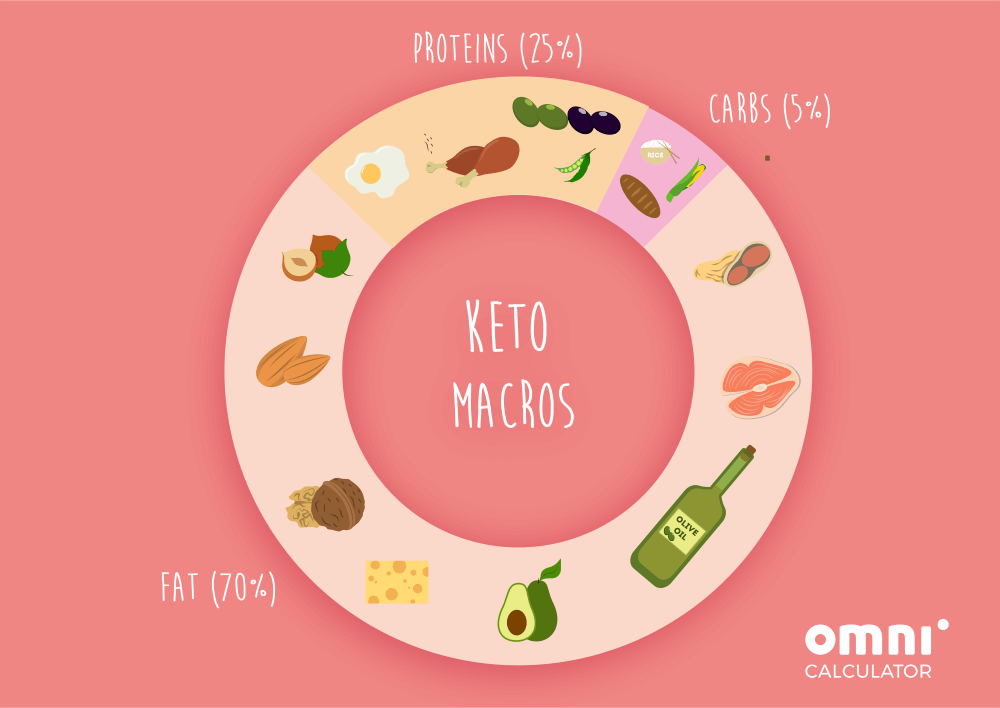
Interestingly enough, you may of heard of the keto diet in the medical world, before it turned into the latest fad diet. It has been used to help manage conditions such as epilepsy. And while the keto diet may work for some, it’s designed to be a shorter term diet, not a long term one.
What can I eat on the Keto Diet?
Meat, chicken, fish, eggs, cheese, nuts, avocados, dairy (milk, cheese, yogurt and butter) and low carb vegetables in smaller amounts. More notably, what’s not allowed on the diet is bread, pasta, all other starchy carbs, beans, sugar, processed foods, alcohol and most fruits. Even higher starchy carbs such as corn are only allowed in small portions.

Pros of Keto Diet?
The most obvious pro to the keto diet is weight loss. And as a bi-product of weight loss, there can be other health benefits such as lower blood sugar, blood pressure, overall cholesterol, reduced inflammation, etc. Many people also note an increase of energy after a few weeks (sometimes closer to 4-6 weeks) into the diet.

In the bigger picture, there are studies that show a decrease in seizure activity for people who suffer from epilepsy. And while more research needs to be done in this area, there have also been studies that show the keto diet (and other low carb diets) can lead to a decrease of potential cancer and may also help to treat various forms as well. Again, more research needs to be done in this area.
Cons of Keto Diet?
Adhering to the keto diet is challenging. For many people, the extremes of the diet (no carbs in particular) can be opposite of what they are used to and force a major lifestyle/diet change. And while the diet can be successful at short term weight loss (due to the extreme changes), it’s not realistic for the long term (more on this below).
Have you heard of the “keto flu”? Honestly, we hadn’t until recently. The keto flu describes how crappy the beginning of the diet can be. Since you’re cutting out most carbs and sugar, this period can act as almost a detox-like stage. Enter dizziness, nausea, headaches, fatigue, grumpiness and you know, just being HANGRY 😱

The “keto flu” tends to clear up after a few weeks, although some people have noted it can take longer in the range of 4-6 weeks to really start feeling better. Once it’s passed and your body has adjusted to a lower glucose supply, you should start to feel balanced out, even a sense of heightened energy. Many people also note a major decrease in hunger and cravings as well (you can add that to the pro list!).
Due to the high fat content of the keto diet, there are also concerns about heightened cholesterol (specifically LDL levels) and the impact it can potentially have on the heart. If this is an individual concern, a simple drop in overall fat content would be recommended. Something to consider, if high cholesterol runs in your family (genetically predisposed), the keto diet may not be the best for you.
As previously mentioned, the keto diet is not recommended for longterm use. Since the diet is so low carb, which requires the cutback or elimination of many fruits and some vegetables, you can run a risk for vitamin/mineral deficiency. While a few weeks may not impact your health, months can certainly do so. Thus, the keto diet is generally recommend for short term use, a cycling approach or modified, more relaxed version.

Lastly, the biggest con to the keto diet, as with any extreme diet, is the potential for weight re-gain. We all know someone that has dropped a significant amount of weight on the keto diet, or on any other diet for that matter. And while weight loss in most cases is a positive thing for health purposes, weight re-gain or yo-yo dieting is not so good. Not only can this be tough from an emotional perspective, it can also be tough on your body and put a strain on your metabolism.
Is the Keto Diet for me?
Good question. Maybe ✅, maybe ❌. Just like all other extreme diets, here are a few good questions to ask yourself before jumping on board:
👉 Am I ready, willing and able to make major nutritional and lifestyle changes?
👉 Do I thrive from being on an eating plan with major limitations and restrictions?
👉 Do I have any health issues or disorders that would present any complications by being on the keto diet? Always best to ask your doctor first!
👉 Do I have a history of yo-yo dieting or jumping on the latest diet fad? If so, have I been successful in the longterm with any of these approaches?
👉 Does being on a restrictive eating plan cause negative behaviors? Think disordered eating👇

Dependent on your answers above, the keto diet may be a good fit for you, or at least something to give a try. At best, it works for you and your lifestyle. At worst, it’s not the best fit and you walk away with a few positive, new behaviors such as lessened sugar in your diet. And if the keto diet is not the best fit for you, that’s OK!
Our take-away on the Keto Diet…
You may have noticed that our above con list is a bit longer than our pro list. Keto diet aside, we aren’t big fans of diets in general. Diets can be extreme, restrictive and mostly unrealistic for long term health.
With that being said, there are some positive attributes to the the keto diet. It does push people to make better nutritional decisions — more high quality proteins, increased vegetables, absence of junk and fast food. These are all unarguably, really great things.
At the same time, the keto diet also cuts out entire food groups — such as starchy carbs and sugar, which although should be consumed lightly, can be a great source of enjoyment and pleasure in life! And like many other diets, due to the restrictiveness, it can even spark disordered eating for some people.
The keto diet is ultimately very similar to many other diets. And while it’s easy to see why people succeed on this diet (for the short term anyway), the keto diet, along with any other strict diet, is not necessary to achieve similar, and more importantly, long term results.

Instead of an all or nothing approach, or before jumping on the diet bandwagon, try this approach instead: lessen your starchy carbs, choose whole grains, high quality lean proteins, eat a wide variety of fruits and vegetables, limit sugar, junk/snack food and alcohol. Chances are, if you follow these tips, you’ll see a decrease in unwanted weight and body fat and an increase in overall health. And most importantly, for the long term. It may not sound hot and sexy like the keto diet, but it’s simple and simple works 🙂
Written by Sophie DeHenzel
What is the Keto Diet and should I be doing it?
Photos courtesy of (top to bottom): me.me., slidehare.net, omnicalculator.net, pop sugar.com, cooksmarts.com, fao.org, signumcrossfit.com, brittanyguerin.com.
.
Hi, I’m Sophie. I’m Co-Owner of DeHenzel Training Systems, Precision Nutrition Level 2 Certified, Certified Personal Trainer and Pre/Post Natal Specialist. I’m also a wife, mom, tennis beginner and ice cream lover.
Most importantly, I love helping people just like you gain control of their health for good. If you’re tired, frustrated and still struggling to rein in your diet and get moving, check out our nutrition and personal training services and take the first step today.
About DeHenzel Training Systems: DeHenzel Training Systems offers In Home Personal Training services throughout Northern Virginia and Washington DC. We also offer Virtual Personal Training – train anywhere, any time!
Within Northern Virginia, we service Arlington, Loudoun, Fairfax and Prince William Counties including: Alexandria, Annandale, Arlington, Ashburn, Burke, Centreville, Chantilly, Fairfax, Falls Church, Gainesville, Great Falls, Haymarket, Herndon, Lansdowne, Leesburg, Lorton, McLean, Oakton, Reston, Springfield, Sterling, Tyson’s Corner, Vienna and Woodbridge. Don’t see your city listed? Contact us today to find out if we service your area!
Q&A Tuesday:
How to Become 20% of New Year’s Resolutions
Q&A Tuesday:
How do I Break Through a Weight Loss Plateau?
Q&A Tuesday:
How to Create a WINNING Nutrition Strategy
Q&A Tuesday:
5 Ways to Get the Scale Moving Again
Welcome back to our “Q&A Tuesday” series, where each week we take a question that we get asked all the time and share our expertise. In case you missed it, last week we covered, “How to CRUSH Your Nutrition While Traveling” In case you missed it, you can catch it HERE.
This week, we are taking on an ongoing popular topic, weight loss. It can be super frustrating when you’re working hard in the gym, making better food choices and the scale just….isn’t….moving. Sound familiar at all?

Oftentime, clients ask us if they should exercise more – increase their workout days or do more cardio. While sometimes the answer is a simple, “yes”, oftentimes there are other factors that can be prioritized before logging more workout hours.
Inspired by Jen Comas of Girls Gone Strong on just this topic, here is our list of 5 things to consider when the scale isn’t moving:
1) Consistency
The first question to ask yourself when the scale isn’t moving is how consistent are you being with your workouts and nutrition? Are you sporadic with exercise? Are you either on or off with your nutrition?
To lose weight, you certainly don’t need to be in the gym five days a week or tuned into your nutrition 100% of the time, but you do need to be consistent with your efforts.
Sure workouts can fluctuate from week to week, give or take a session, but if some weeks you’re working out 1x/wk and others 3x/wk, it may be time to dial in your level of consistency a bit more.

In terms of nutrition, striving for 100% healthy choices all the time isn’t realistic nor is it fun. Striving to never have a brownie again? Zero fun. Staying away from your friends due to fear of nachos and beer? Zero fun. Obviously you can’t have fun all the time and expect weight loss, but there can certainly be a balance.
Striving for an 80/20 balance is a great goal when it comes to nutrition. 80% of the time, making optimal nutrition choices and 20% of the time, indulging a bit and having fun. If 80/20 seems too loose for you, you can always start with 90/10 and see how that works.
The key here is consistency. Eating optimally one day is awesome, but not being able to string a bunch of those days together or the majority of your meals is a common area that can have a huge impact on weight loss.
2) Weekend Eating
Weekends account for roughly ⅓ of the month. Crazy when you put it into perspective, right? While weekend eating ties into the above consistency, it’s also a specific area that often gets overlooked.
If you’re one of those people who eats really well during the week but anything goes during the weekend, that means about ⅓ of your month is comprised of less than stellar nutrition choices. That’s a lot of days, especially if you’re trying to lose weight.

It is certainly tough to stay dialed into nutrition on the weekends, especially when it’s the perfect time to unwind, get together with friends, shut your brain off, enjoy your downtime and have a little fun. Nachos and beer anyone? 🙂
However, if you’re struggling to get the scale moving again, take a look at what’s going on during the weekends. Perhaps instead of throwing it all away come Friday night, you can splurge on one meal each weekend day. Pancake breakfast or pizza dinner?
3) Dietary Fat
Dietary fat is another often overlooked variable when it comes to fat loss. While good fats are good and significant to weight loss, too much fat (either good or bad) can hugely impact the scale in a negative way.
Fat can add up quickly because it tastes good, plain and simple. It’s also very dense, calorie-wise – 9 calories for every 1 gram of fat compared to the 4 calories for protein and carbohydrates.

If you’re struggling to get the scale moving again, try taking a look at your overall fat consumption. Keep a food log for a few days and add up your fat totals for the day. You may be surprised to find yourself eating a high amount of fat, much more than your body needs, sending those calories into excess storage.
4) Alcohol
Aside from empty calories, alcohol can have a negative impact on weight loss in other less obvious ways. One less obvious way that alcohol can increase your waistline is it can disrupt your digestion, which can increase insulin resistance, making it tougher to lose weight. Alcohol can also negatively impact sleep quality which is one of the biggest lesser known variables when it comes to weight loss.
And of course there are more obvious effects that alcohol has on the body such as decreased proper judgement (hello entire pizza or handful of cookies!), excess calories, nutrient and hormone disruption and over a longer period of time with more heavy use, vital organ breakdown.

We’re not here to tell you NOT to drink, heck – I couldn’t picture going out for mexican food without a salted margarita on the rocks! We are here to tell you that alcohol, even in moderation, can have a negative impact on your weight loss journey.
If you’re struggling to get the scale moving again, take a look at your alcohol consumption. If you generally have a 1-2 drinks most nights, try cutting that down to 1 drink every other night. See what that does for your weight loss stall.
Some bodies are more sensitive to alcohol intake and you’ll find that even a few drinks per week can negatively impact your loss. Whereas other bodies can tolerate a few more drinks.
Bottom line: weight loss comes with sacrifice and for most people, alcohol is one area that many will find that they need to say “no” to more often in order to say “yes” to the scale and measurements going down.
5) Resistance Training
Last but not least, if you’re having trouble with the scale moving in a downward trend, look over your exercise routine. Are you doing any resistance training (weight lifting) at all or mostly just body weight movements and/or cardio?

We talk about it A LOT, but weight training is awesome for soooo many reasons. Cutting to the chase, lifting weights increases muscle. The more muscle your body has, the more body fat it burns at rest. The more body fat it burns at rest, the leaner and more defined you will be.
So if you’re lack resistance training in your program and you’re actively trying to lose weight or further define your body, add some into your workouts. You can do so by adding in weight training to cardio days or you can separate your weight training and cardio days.
.
⇒ Do you have more questions about how to get the scale moving again? If so, drop us a line and let us know! And make sure to tune in next week as we will be answering our next question…
Written by Sophie DeHenzel
5 Ways to Get the Scale Moving Again
Photos courtesy of (top to bottom): Bigstock (TeroVesalainen), Bigstock (Ivelin Radkov), Bigstock (Dean Drobot), Bigstock (Rawpixel.com), Bigstock (beer5020), Bigstock (shutter2u)
.
Hi, I’m Sophie. I’m Co-Owner of DeHenzel Training Systems, Precision Nutrition Level 2 ProCoach, Certified Personal Trainer and Pre/Post Natal Specialist. I’m also a wife, mom, tennis beginner and ice cream lover.
Most importantly, I love helping people just like you gain control of their health for good. If you’re tired, frustrated and still struggling to rein in your diet and get moving, check out our nutrition and personal training services and take the first step today.
About DeHenzel Training Systems: DeHenzel Training Systems offers In Home Personal Training services throughout Northern Virginia and Washington DC. We also offer Virtual Personal Training – train anywhere, any time!
Within Northern Virginia, we service Arlington, Loudoun, Fairfax and Prince William Counties including: Alexandria, Annandale, Arlington, Ashburn, Burke, Centreville, Chantilly, Fairfax, Falls Church, Gainesville, Great Falls, Haymarket, Herndon, Lansdowne, Leesburg, Lorton, McLean, Oakton, Reston, Springfield, Sterling, Tyson’s Corner, Vienna and Woodbridge. Don’t see your city listed? Contact us today to find out if we service your area!
Q&A Tuesday:
How to CRUSH Your Nutrition While Traveling
Welcome back to our “Q&A Tuesday” series, where each week we take a question that we get asked all the time and share our expertise. In case you missed it, last week we covered, “What is Better for Fat Loss – Cardio or Weight Training?” In case you missed it, you can catch it HERE.
We are back with another nutrition topic this week and a super popular one. In fact one that almost all of our clients struggle with to some extent – nutrition and travel, particularly when it comes to work travel. Today we bring you some tried and true insight on how to set yourself up for success on the road and not come back heavier 🙂

It can be super easy to fall out of a nutrition routine when traveling. For starters, your routine is no longer your routine. Your schedule, surroundings and available options are all different. For most people, these changes can be enough to throw them off track.
Throw work travel into the mix and it becomes even more difficult. Long, busy, hectic days filled with meetings where catered food choices can become limited (pizza, anyone?) or 5-course corporate dinners where the wine flows freely. These situations are common and while they can certainly make healthy eating much more difficult, we are here to show you how it can be done.
Regardless of whether you’re traveling for pleasure or for work, our 4-P Travel System can set you up for success. Follow along below as we lay out the 4 P’s.
Prepare
Our first P, is no secret. Preparation alone can get you really, really far and it’s the first step to setting yourself up for success when it comes to nutrition and travel. The best way to prepare for an upcoming trip is to take a look at the specifics of your trip, beginning with…
- how long with you be gone for – days, weeks, even a month?
- where will you be traveling – a remote area with limited or no access to stores or more of a metropolitan area?
- where will you be staying – will there be a kitchen or mini fridge in your room?

These are all great starting questions to ask yourself that will help lead into the following 3 P’s.
Pack Ahead
Once you have your trip specifics laid out, or as much as you can solidify, next comes the packing. Even if you’re staying somewhere with access to great food stores, it’s never a bad idea to go into your trip with healthy go-to snacks on hand.
Sometimes flights get delayed, traffic happens, schedules shift and your free time becomes non-existent. In these instances, you’ll be super happy to know that you have packed some friendly options that can either be thrown together for a small meal or be used as a snack.
Some great non-perishable healthy food options that are all packable are:
- fruit (apples, oranges, bananas)
- dried fruit
- mixed nuts
- beef jerky
- nut butter individual packets (Justin’s makes yummy ones)
- low sugar, high protein bars (Quest and Think Thin are a few of our favorites)

If you will have access to a kitchen or mini fridge in your hotel and you’ll be flying, make a plan (next step) to locate and hit up a nearby store once you get to your destination to stock up on some perishbale healthy options such as:
- plain greek yogurt
- baby carrots and hummus
- cottage cheese to be mixed with fruit and/or nuts
- small milk or non-dairy beverage for instant oatmeal
These items are also great to have on hand to act as snack or small meal such as breakfast in case your morning is too rushed to go out or the hotel/nearby choices are sub-par.
Plan Ahead
As Benjamin Franklin once said,
“if you fail to plan, you plan to fail”
Taking a page from Ben’s book, this is certainly translatable when it comes to travel and nutrition. There are certain elements when it comes to travel that you can’t plan for – delays, traffic, work meetings, events, food options, locations, the restaurant that your boss chooses for dinner, etc. However, there are always things that can be controlled, such as your CHOICES.
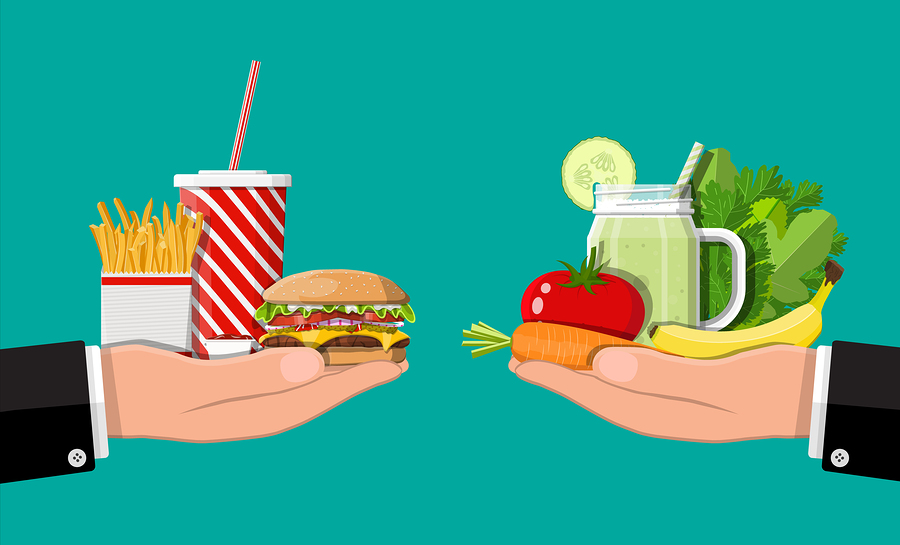
If you are traveling and a restaurant has been picked for you, take few moments on your way to your meal to pull up the menu ahead of time. If possible, select your meal before you get to the restaurant. Having a plan in place is super helpful before arriving to a restaurant. Otherwise, it’s easy to get lost in the french fry aroma and make a less than stellar decision when it’s your time to order.
Also worth mentioning, don’t be afraid to order off the menu or customize to your preference. Most restaurants are happy (or at least willing) to make accommodations. Opt for dressings on the side, light on oils or sauces, grilled or broiled over fried, etc.
Portion Control
While portion control is something that should always be practiced, particularly if you’re trying to lose body fat, it will be your best friend when traveling. Portion control requires a conscious CHOICE, but again, it’s one that is there for you to execute…
Work meeting only serving pizza for lunch? ⇒ PORTION CONTROL
Fast-food your only option on the road? ⇒ PORTION CONTROL (and menu choice)
5-course dinner meal entertaining clients? ⇒ PORTION CONTROL
All you can eat buffet for every meal? ⇒ PORTION CONTROL
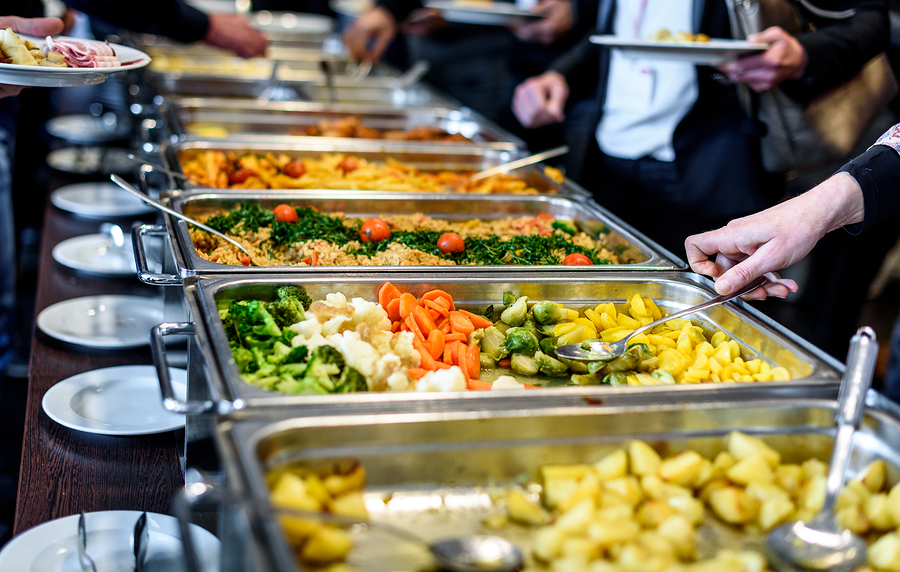
A good tactic when it comes to portion control is to eat slowly and to 80% full. While both strategies can take some (or a lot) of practice, they are both winning strategies when it comes to portion control. However, if taking your time during your meal isn’t feasible or tuning into your body is not your thing, here are some other tactics that can help with portions…
- only eat half of your plate
- ask the server to box up half your meal before it reaches your table
- order an appetizer for your main meal
Fast Food (a quick note)
Fast food is the ultimate convenience and can go hand in hand with travel. While many airports are beginning to offer healthier choices to travelers, on the road the options tend to be more limited. So if a fast food stop becomes your only, dire option, here are some tips to come out a winner…
- salad with grilled chicken and dressing on the side
- grilled chicken wrap over fried chicken
- opt for wraps instead of buns or bread
- swap out fries for a side salad or fruit cup
- keep the portions small, no super-sizing here!
- opt for water over soda, juice or a shake

While fast food isn’t notorious for healthy eating, it’s quite possible to order well just about anywhere there days. It may take a little willpower and some better choices (there’s that word again!), but it’s totally possible 🙂
.
⇒ Do you have more questions about nutrition and travel? If so, drop us a line and let us know! And make sure to tune in next week as we will be answering our next question…
Written by Sophie DeHenzel
How to CRUSH Your Nutrition While Traveling
Photos courtesy of (top to bottom): Bigstock (tommaso79), igstock (artursz), Bigstock (abscent), Bigstock (_jure), Bigstock (hannamariah)
.
Hi, I’m Sophie. I’m Co-Owner of DeHenzel Training Systems, Precision Nutrition Level 1 ProCoach, Certified Personal Trainer and Pre/Post Natal Specialist. I’m also a wife, mom, tennis beginner and ice cream lover.
Most importantly, I love helping people just like you gain control of their health for good. If you’re tired, frustrated and still struggling to rein in your diet and get moving, check out our nutrition and personal training services and take the first step today.
About DeHenzel Training Systems: DeHenzel Training Systems offers In Home Personal Training services throughout Northern Virginia and Washington DC. Aside from in home, personal training is also available at the office gym or outdoors at a local park. We also offer Nutrition Coaching and Online Personal Training services worldwide.
Within Northern Virginia, we service Arlington, Loudoun, Fairfax and Prince William Counties including: Alexandria, Annandale, Arlington, Ashburn, Burke, Centreville, Chantilly, Fairfax, Falls Church, Gainesville, Great Falls, Haymarket, Herndon, Lansdowne, Leesburg, Lorton, McLean, Oakton, Reston, Springfield, Sterling, Tyson’s Corner, Vienna and Woodbridge. Don’t see your city listed? Contact us today to find out if we service your area!




